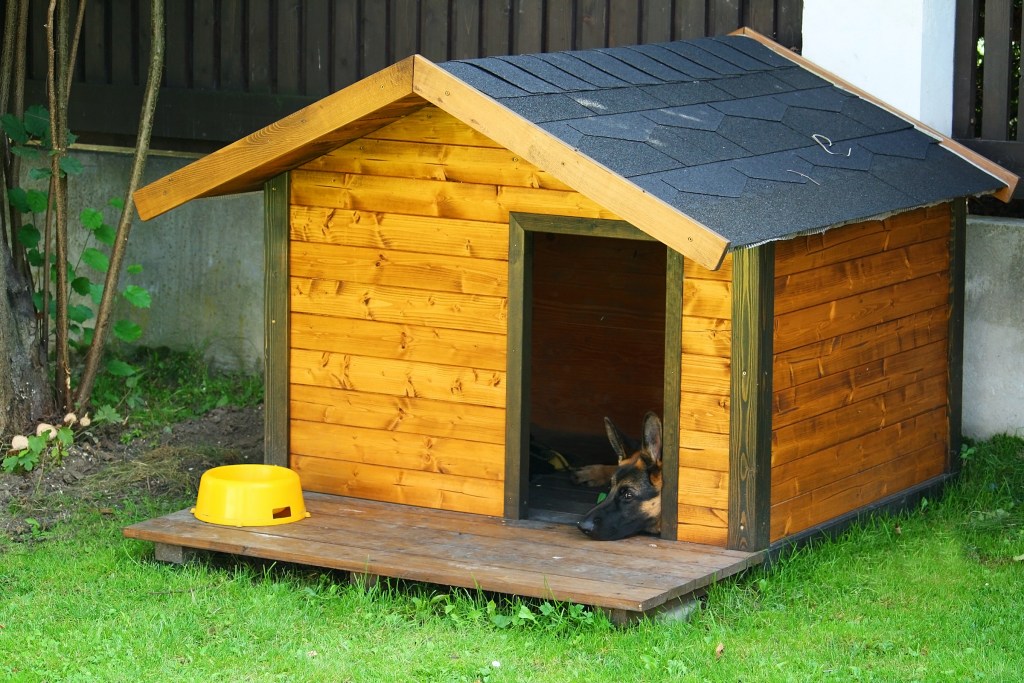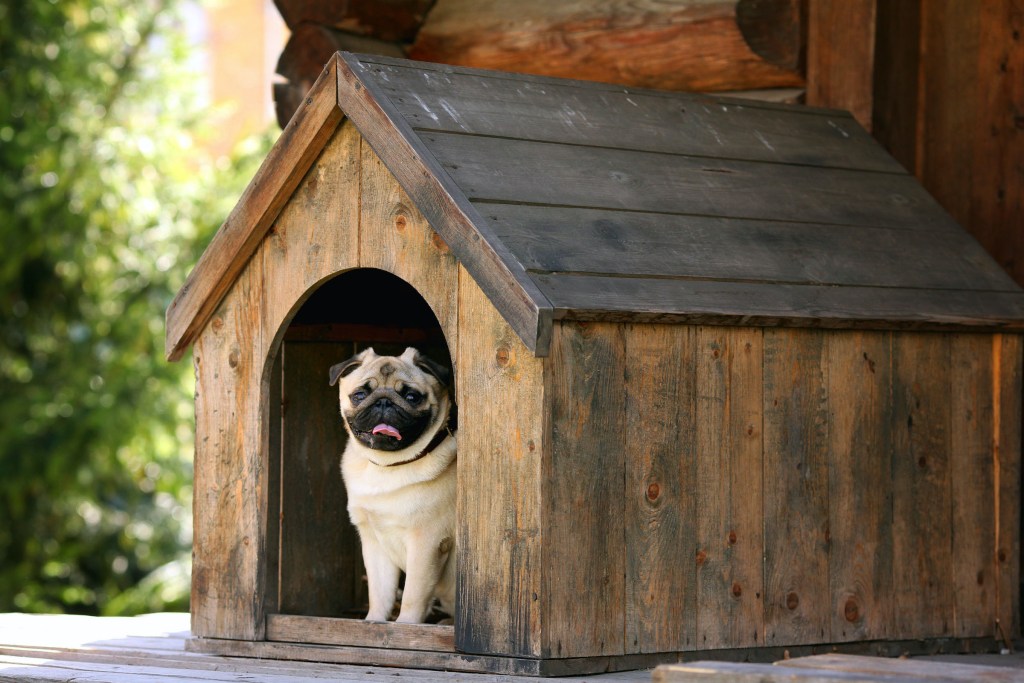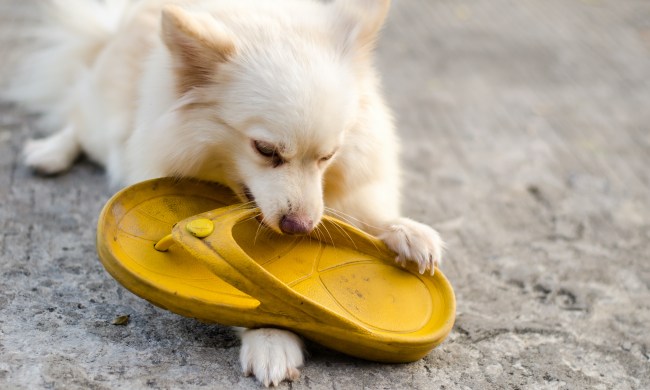Before investing in something as important as a doghouse, it can help out a lot to know what you’re looking for. Not every pup is compatible with every doghouse, and size can be a large reason why. You wouldn’t like a tiny, cramped little space, would you? Neither would your dog, but you won’t have to worry about that if you already know their size. With a few measurements and a location for the doghouse in mind, you’ll be all set and ready to shop. Your yard is about to get a lot more exciting, pet parents.

How to measure your dog for a doghouse
Grab a tape measure—a long one. The ideal length for a doghouse is about a foot longer than the length of your pet (fully grown, of course). You’ll find it easiest to take this measurement while your dog is standing, and it could help to jot down their height as well, so you don’t buy a doghouse they have to crouch to enter.
Also, keep in mind any dog bed or padding you’re planning to furnish their new abode with. Dog beds can take up several inches in all directions, making the difference between a comfortable interior and a crowded one.

What to consider when purchasing a doghouse
If you’re particular about the style of doghouse you’ll have in your yard, you may want to browse online to see as many visual examples as possible. You’re more likely to find a variety of options online or made to order, rather than simply visiting the pet store, but some pet parents prefer to see it in person before they buy. Here are a few other things to keep in mind while you’re browsing:
Doghouse dimensions
As stated above, the size of the doghouse can make a difference between your pup loving and hating it. In addition to measuring your dog to make sure you’ll find something comfy for them, you may want to take a couple of measurements around your yard too. If you know where you’re going to put your new doghouse, the last thing you’d want is to buy something that won’t fit.
When shopping for doghouses, you’ll likely find a size breakdown similar to this one for the Trixie Dog Club House in Glazed Pine:
- Small/Medium: house length: 33.5 in., width: 23.5 in., and height: 22.75 in.; maximum pet weight 45 lbs
- Large: house length: 40.75 in., width: 26.75 in., and height: 28.25 in.; maximum pet weight 70 lbs
- X-Large: house length: 45.5 in., width: 31 in., and height: 32.35 in.; maximum pet weight 95 lbs
Doghouse material
One overlooked characteristic of doghouses is their material. Some artisan crafters and larger companies make carefully constructed houses out of wood — treated and weatherproofed, of course — while others use heat-resistant, shock-proof plastic. All outdoor doghouses are designed to withstand weather, including rain and cold, but it’s a smart idea to look for the details to ensure your pup’s comfort year-round.
Doghouse location
You may think that a doghouse can go just anywhere in the yard, but that’s not always the case. It’s important to make sure that the ground is level and flat where you’re planning on placing it, or you’ll risk your pet’s safety and comfort.
You may also want to pick a spot that’s safe from harsh winds and sun rays, perhaps between trees that block both elements. If your dog seems to enjoy spending time in a certain spot in the yard, maybe that’s the spot!
Another thing to consider is elevation. If water tends to gather in one area of your yard when you water your plants or when it rains, that would not be a good place for a doghouse. Even though many models have enclosed, protected floors, standing or moving water can still damage the outside.
Now that you know the basics of Doghouses 101, you’re ready to shop. Of course, it can be hard to say whether or not your pup will be immediately drawn to their new shelter, but in time they’ll learn to appreciate the new addition. If you do your research and shop smart, odds are you’ll love it too!



